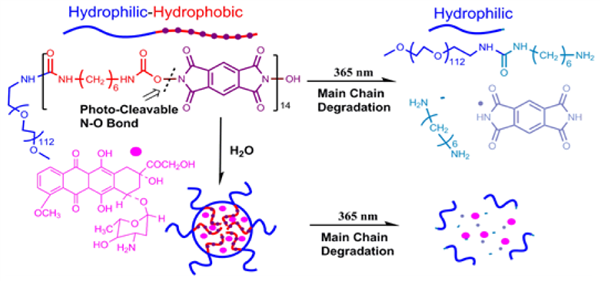(Langmuir )Amphiphilic Polymer Micellar Disruption Based on Main-Chain Photodegradation
作者:Min Tian, Ruidong Cheng, Jun Zhang, Zhaotie Liu, Zhongwen Liu, and Jinqiang Jiang*
关键字:Polymer Micellar
论文来源:期刊
具体来源:Langmuir 2016, 32, 12?18
发表时间:2016年
The amphiphilic block copolymer poly(ethyleneoxide)-b-poly(N,N′-dihydroxypyromellitimide-hexamethylene diisocyanate)(PEO-b-PNH) with photocleavable N?O urethanes hasbeen prepared to investigate the photodegradation of the hydrophobicmain chain and therefore the disruption of copolymermicelles. Measurements of absorption and emission spectra, opticaltransmittance, DLS analysis, and TEM observations were applied. It was shown that PEO-b-PNH could self-assemble into flower compound micelles in water. The photodegradation of the hydrophobic polyurethane within the micellar core upon irradiationwith 365 nm light could be conveniently controlled by changing the irradiation intensity; furthermore, complete micellar disruption could be achieved when 42% of N?O urethanes were photocleaved. By using DOX as the hydrophobic guest, the drug release profile showed a linear leakage of DOX out of the swelling polymer micelles in the initial stage and thereafter a much more quick exponential decay of DOX precipitation because of the micellar disruption upon further irradiation. The diffusion experiment of the leaked DOX into buffer solution (pH 7.4) showed that the DOX leakage could be prominently accelerated by a very short time of 365 nm irradiation, indicating that the N?O photocleavage can serve as a “turn-on” switch for the release of DOX in aqueous media.